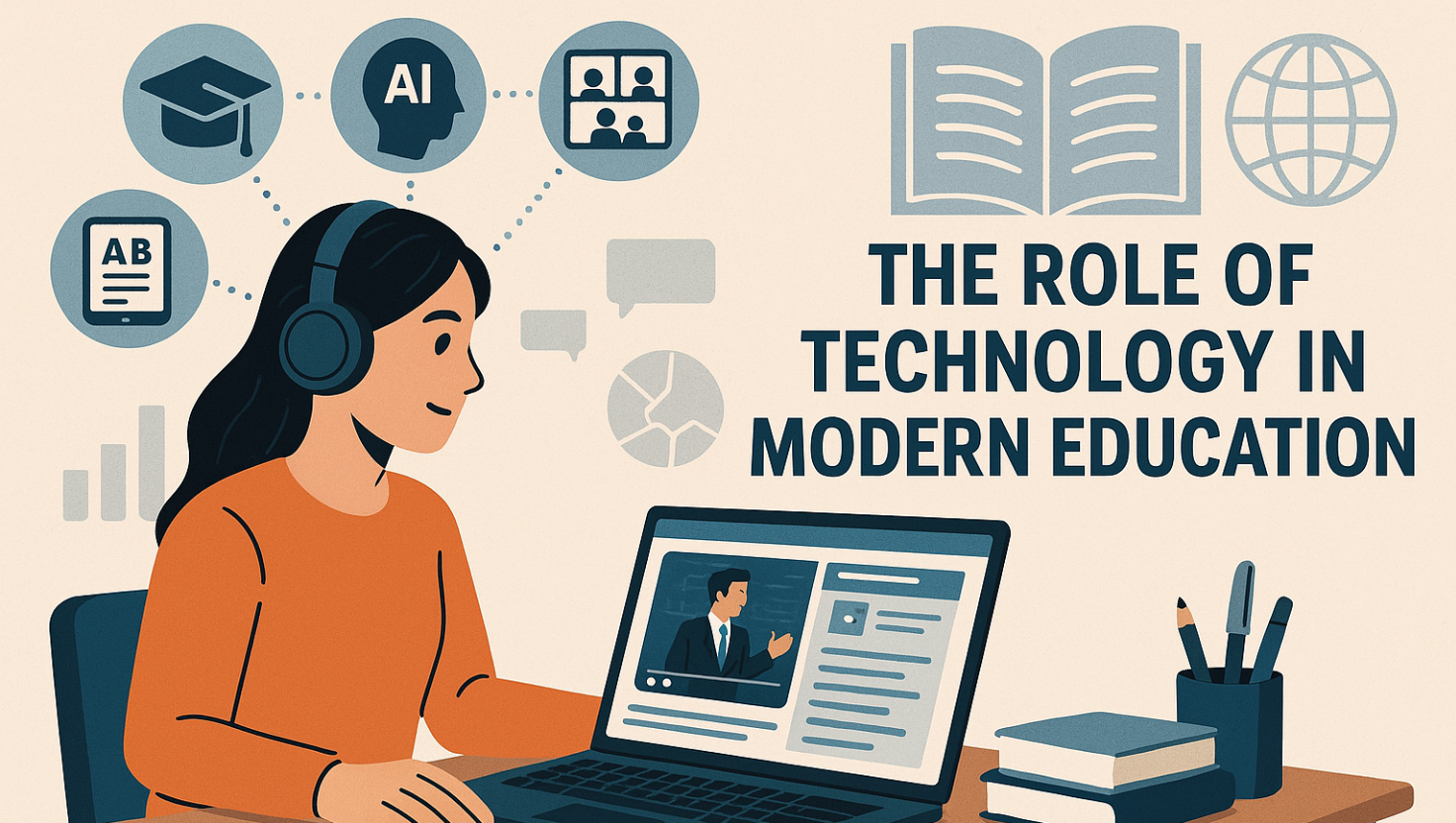The Role of Technology in Contemporary Education
Introduction: The Digital Revolution in Education
Technology has revolutionized all areas of our life, and education is not different. The emergence of EdTech, online education, AI education, virtual classes, digital literacy, interactive learning, personalized learning, smart classrooms, education tech trends, and the future of education has transformed the way students learn. From interactive lessons to AI-based tutoring, contemporary classrooms have moved away from conventional means, making education more interactive, accessible, and efficient.
How Technology is Revolutionizing Learning Experiences
Technology has brought in new means of learning, including:
Online Learning Platforms: Sites like Coursera, Udemy, and Khan Academy offer access to courses from leading institutions.
Smart Classrooms: Digital whiteboards and AR/VR-based simulations facilitate better understanding.
Gamification: Applications like Duolingo utilize interactive features to engage and make learning effective.
The Rise of Online Learning and Virtual Classrooms
The COVID-19 pandemic accelerated the shift to virtual classrooms and online learning platforms. According to UNESCO, at the height of the pandemic, over 1.2 billion students worldwide were affected by school closures, leading to a surge in remote education. Platforms like Zoom, Google Classroom, and Microsoft Teams enabled students to continue learning from home.
AI and Personalized Learning: A New Era in Education
Artificial Intelligence (AI) is transforming education by providing customized learning experiences:
AI Tutors: Education platforms like Squirrel AI and Carnegie Learning modify lessons according to students' individual requirements.
Automated Grading: AI optimizes teachers' workload by marking assignments effectively.
Chatbots for Student Support: Most universities adopt AI-based bots for student-related queries and educational support.
Smart Classrooms: Improving Engagement and Collaboration
Smart classrooms leverage digital tools such as:
Augmented Reality (AR) & Virtual Reality (VR): Such applications as Google Expeditions enable students to experience virtual field trips.
Interactive Whiteboards: Promethean and Smart Board are examples of tools used to replace traditional blackboards.
Collaboration Software: Examples of tools used to facilitate real-time collaboration include Padlet and Miro.
Key Facts & Figures: The Impact of EdTech
The EdTech market will be worth $404 billion in 2025 (HolonIQ).
90% of students think that digital learning tools enhance their learning experience (McKinsey).
Schools that apply personalized learning technology experience 30% better student performance.
Challenges and Future of Educational Technology
Although beneficial, technology in schools also has challenges:
Digital Divide: Students lack access to the internet, leading to disparity in learning opportunities.
Teacher Training: Teachers require frequent training to stay abreast of new tools.
Cybersecurity Issues: More online learning raises issues of data privacy.
Emerging trends in instructional technology are AI-based adaptive learning, blockchain certification, and immersive learning using VR and AR.
Conclusion: Embracing the Future of Learning
Technology is transforming learning, making it more inclusive, interactive, and effective. Despite challenges, the increasing use of AI, virtual classrooms, and intelligent learning instruments will lay the foundation for an inclusive and cutting-edge education system. Educational institutions and schools need to adopt these innovations in order to equip students with the skills needed for future learning.
